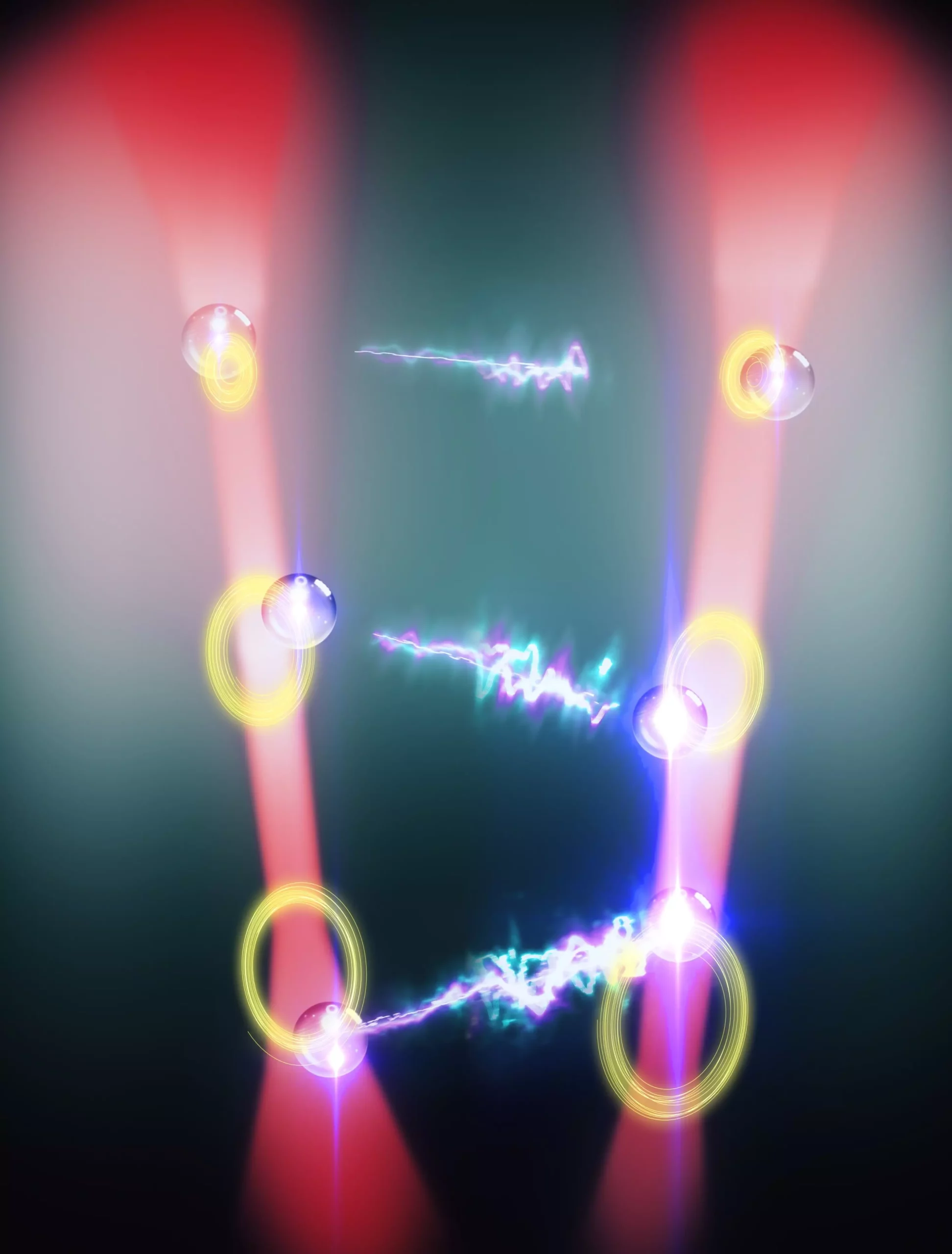The field of quantum physics is replete with enigmatic phenomena, stretching the boundaries of what we understand about the universe. Recent research has unveiled exhilarating insights into collective non-Hermitian and non-linear dynamics using glass nanoparticles, pushing the frontiers of optical levitation. This pioneering work exemplifies the transformative nature of combining theoretical physics with innovative experimental techniques that challenge the conventions of particle interactions.
A New Era of Optical Tweezers
Optical tweezers, a technique that redefined particle manipulation, serves as the foundational platform for this groundbreaking research. The original concept, credited to 2018 Nobel Laureate Arthur Ashkin, allows for the precise control of small particles using laser beams. However, the work conducted by the University of Vienna team, under the direction of Uroš Delić, significantly elevates this concept by introducing non-reciprocal interactions to the equation. By integrating non-conservative forces, they have not only expanded optical tweezing capabilities but have also created a unique experimental framework that challenges conventional understanding.
In traditional physics, interactions are generally reciprocal, characterized by symmetric reactions — objects either attract or repel each other. But within complex natural systems, such as predator-prey dynamics, this symmetry can be disrupted, resulting in non-reciprocity. By employing an analytical model developed with collaborators from Ulm University and the University of Duisburg-Essen, the researchers observed a remarkable interplay between two optically-trapped nanoparticles that mimicked predatory behavior.
Observing Dynamic Interactions
The team configured their experimental setup to observe the dynamics of two glass nanoparticles oscillating in individual tweezers. The interaction was akin to a chase, where one particle represented the predator and the other its prey. Manuel Reisenbauer, a Ph.D. researcher in the team, articulated the concept beautifully: “We control the physical model with a computer, as simple as programming a computer game.” This perspective on controlling physical systems underscores the potential for future innovations using accessible technology.
The advanced optical arrangements allowed researchers to manipulate the laser beam phases and particle proximity. Through this control, they succeeded in creating constructive interference around one particle and destructive interference around the other. The resulting positive feedback loop skyrocketed the particles into a dynamic rhythm, embodying the predator-prey chase that underscores much of biological systems.
Breaking Symmetry and Creating Amplified Motion
The phenomenon of anti-reciprocal interactions drew significant attention in the study. When the nanoparticles were subjected to these interactions, their “swing” motions evolved into a complex feedback mechanism that broke what physicists refer to as parity-time reversal symmetry. In practical terms, this means the particles began to exhibit behavior that, when analyzed in reverse, showcased an intriguing role reversal aptly demonstrated through the predator-prey analogy.
As the interactions intensified, the particles entered a regime where friction was no longer a limiting factor. Instead, they oscillated in a sustained manner, illustrating non-linear dynamics that have far-reaching implications in understanding collective behavior in other physical realms. Benjamin Stickler, the lead theorist, remarked on how this system displays dynamic characteristics reminiscent of natural systems. His assertion that the dynamics led to a limit cycle showcases a fundamental element observed across numerous fields, extending its relevance beyond just quantum mechanics into the realms of laser physics and beyond.
Potential Applications and Future Insights
The implications of these findings are as profound as they are diverse. The ability to harness non-reciprocal forces opens new avenues for applications in force and torque sensing at unprecedented scales. Moreover, the potential combination of these insights with quantum mechanics could propel research into non-reciprocal interactions among quantum systems, where the nuances of few-body dynamics remain largely unexamined.
As researchers delve deeper, the expectation is to observe increasingly complex collective behaviors by trapping larger ensembles of particles. The findings mark the dawn of a new era in non-Hermitian dynamics, with intricate interactions that reflect the deeper, more complex fabric of physical phenomena. The continuous evolution of such experimental techniques, paired with mathematical rigor, is set to reshape the paradigms of how we engage with the microcosm of quantum systems.
This remarkable research exemplifies the tenacity of scientific exploration, weaving through the complexities of nature to unveil deeper truths about the universe. Despite the limitations of our current understanding, the relentless pursuit of knowledge ensures that each discovery, such as the one from the University of Vienna, cultivates a fertile ground for future breakthroughs. The bridge between theoretical models and experimental validation invites a rethinking of our environment and the captivating interplay of forces that govern it.


Leave a Reply